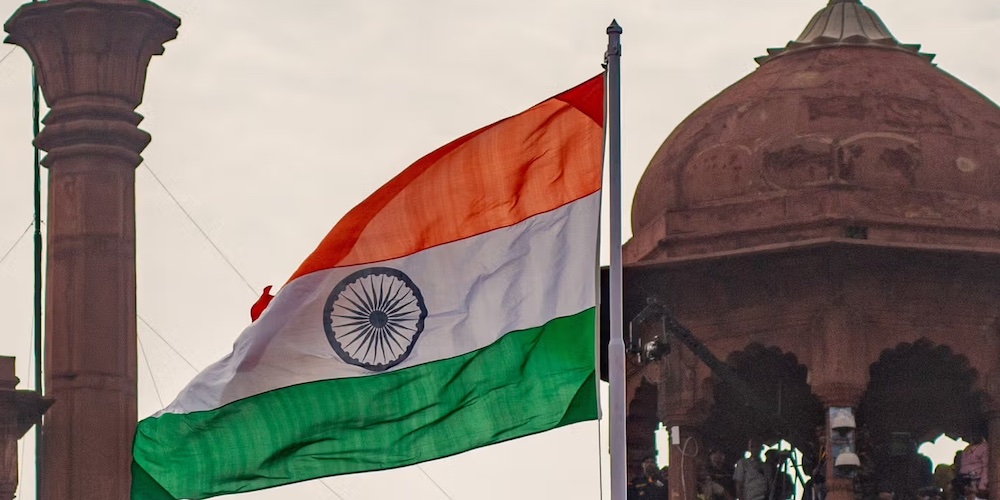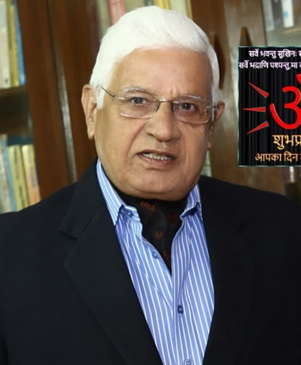The ‘New Normal’ Bharat has arrived!

The emergence of a “New Normal Bharat” is not a sudden sunrise but the culmination of a sustained recalibration in India’s approach to power, economics, technology, and global diplomacy
Under Prime Minister Narendra Modi and a core team of advisers that blends security pragmatism with economic reforms, India has moved beyond the conventional expectation of a rising economy to articulate a coherent, active role in shaping a multipolar world. The narrative that now travels widely is not merely about growth numbers or reform announcements; it is about a curated synthesis of resilience, indigenisation, and strategic autonomy that seeks to redefine India’s leverage in global affairs while delivering tangible benefits at home. If one measured the tempo of this shift, it would be evident in three intertwined strands: a robust economic resurgence anchored by domestic innovation and international investment; a rapid advance in digital and financial infrastructure that reshapes everyday life and cross-border commerce; and a more assertive, but strategically calibrated, posture in geopolitics that translates economic power into strategic influence.
Economic Advances
India’s economy has undergone a reorientation that places productivity, competitiveness, and resilience at the centre. The overarching narrative is not simply about growth rates but about the quality and reach of growth: sustained investment in manufacturing, a more integrated supply chain landscape, and a policy environment that rewards efficiency and scale. The flagship economic reform agenda — ranging from simplification of taxation and insolvency processes to targeted incentives for manufacturing — has shifted the trajectory of India’s industrial sector from being a beneficiary of global supply chains to becoming a capable generator of them.
A cornerstone of this shift is the emphasis on “Make in India” reimagined as a broader “Atmanirbhar Bharat” (self-reliant India) strategy. The aim is not self-sufficiency in the old sense of protectionism, but self-reliance as a platform for global competitiveness. Production-Linked Incentive (PLI) schemes across electronics, pharmaceuticals, automotive components, and space-grade technologies are designed to seed scale, spur local innovation, and reduce import dependency in critical sectors. The result is a manufacturing ecosystem where domestic capacity is not merely a substitute for imports but a springboard for exports and the development of global value chains. In tandem with this industrial push, India has maintained a prudent balance between attracting high-quality foreign direct investment (FDI) and strengthening local ecosystems — an alignment of capital with capability that expands job opportunities, elevates productivity, and enhances export capacity.
The story of FDI in recent years has reinforced the sense that India is no longer merely an emerging market but a preferred partner for global capital seeking growth with policy clarity. Investors have been drawn by a combination of a large domestic market, improving ease of doing business in practice, and targeted incentives that align with the needs of modern manufacturing and high-tech services. This inflow has supported not just the expansion of assembly lines but also ignited the development of design, R&D, and innovation hubs that help transform Indian firms into global players in niche domains such as aerospace, information technology, biotechnology, and advanced electronics. The implication for the “New Normal Bharat” is clear: investment is becoming a feedback loop — faster decision cycles, deeper local value creation, and a growing export footprint, rather than a one-time capital infusion.
Indigenisation – ‘Atma Nirbhar Bharat’
Indigenisation is the practical core of Atmanirbhar Bharat. Beyond slogans, the policy architecture has sought to rebuild domestic capacity in ways that strengthen strategic autonomy. Defence procurement and manufacture have been a focal point of this drive. India’s defence ecosystem — ranging from small and medium enterprises to major state-backed players — has been nudged toward domestic sourcing, technology transfer, and ecosystem-building that can withstand external shocks and sanctions. The objective is twofold: to deter aggression through credible, self-produced capabilities and to offer an alternative global market for partners seeking reliable suppliers in a volatile region.
The broader implication of this indigenisation drive is a softened dependence on distant supply chains for critical goods — from weapons systems to semiconductors to energy-intensive inputs. A more autonomous supply chain posture reduces exposure to external shocks and creates space for India to shape global standards in areas where it already holds a competitive advantage, including certain high-technology sectors and complex manufacturing sectors. It also reinforces the narrative of India as a constructive but independent global actor that can offer credible alternatives to traditional power centres while maintaining open, rules-based economic engagement with its partners.
Digital India and UPI
India’s digital transformation is a defining feature of the “New Normal Bharat.” The Digital India programme—once a policy slogan — has become an infrastructure of everyday life and a strategic export. The proliferation of digital payments, the expansion of financial inclusion, and the creation of an interoperable payments ecosystem have mutated the economics of everyday transactions. The Unified Payments Interface (UPI), in particular, stands out as a case study in scale, interoperability, and rapid adoption. What began as a domestic payment rail has evolved into a platform with global reach and potential across remittance, cross-border trade, and digital marketplaces. As more economies experiment with central-bank–backed or private payment rails, India’s experience with UPI offers a template for how a country can blend financial inclusion with competitive, innovative financial services.
Digital India has also accelerated the diffusion of digital public goods — identity, authentication, data-sharing frameworks, and digital infrastructure — that reduce frictions in the economy. This has spurred growth in digital services, fintech, and e-commerce while enhancing governance through transparency and efficiency. In international markets, India’s digital prowess contributes to a broader strategic objective: to be seen not only as a consumer of technology but as a creator and standard-setter of digital infrastructure that can support responsible data governance, secure payment ecosystems, and inclusive access to online services.

Geopolitical Repositioning
The “New Normal Bharat” narrative is inseparable from a recalibrated geopolitical posture. India positions itself as a purposefully multipolar actor — one that engages a range of partners across the globe while protecting its own strategic interests. In regional security, India has underscored a doctrine of strategic autonomy: work with allies and partners where interests align, but avoid becoming overly dependent on any single power bloc. This stance is complemented by constructive security partnerships, defence modernisation, and a robust approach to border management and internal security. It is not a retreat from responsibility but a disciplined distribution of risk — an approach that seeks to deter threats while preserving space for diplomacy and economic engagement.
India’s role in global governance reflects a similar balance. In forums that shape global trade, climate policy, innovation standards, and digital governance, India has pressed for norms that acknowledge developing-country needs while championing free, fair, and rules-based competition. This approach — rooted in the belief that prosperity and security are best preserved through inclusive, rules-based dialogue — has helped India gain credibility as a bridge-builder in a world unsettled by unilateralism and protectionism.
A pragmatic diplomacy that pairs engagement with leverage has also materialised in India’s strategic partnerships beyond its traditional perimeters. The country has deepened relations across the Gulf, Southeast Asia, Africa, and Latin America, combining energy-security diplomacy with investment and development cooperation. In technology and science, India’s collaborations have produced not only commercial gains but also strategic advantages — joint research programs, co-development of critical technologies, and the internationalisation of Indian engineering and software capabilities.
Foreign Policy Feedback Loop
A defining feature of the Modi era is the deliberate integration of domestic reform with international ambition. Economic resilience abroad mirrors resilience at home: reforms that improve productivity, reduce friction for business, and expand opportunity also strengthen a country’s negotiating hand on the global stage. Conversely, a growing, tech-enabled economy enhances diplomatic leverage — allowing India to offer credible partnership in areas such as cyber security, space, green energy, and manufacturing standards. The policy architecture thus operates as a feedback loop: better governance and higher growth attract investment and talent; more investment and talent empower the state to secure favourable terms in international forums and bilateral arrangements; more international engagement strengthens India’s domestic capacity and global legitimacy.
This synthesis has required careful sequencing: pragmatic reforms to the tax system, insolvency, land and labour policies, and credit markets; targeted incentives to attract investment in high-value manufacturing and high-tech services; and a continuous push to enhance digital and financial ecosystems so that growth translates into broader, more inclusive gains. The result is a nation that can compete on cost and capability, while offering a constructive voice in global debates about trade rules, climate commitments, and technology governance.
Challenges on the Path to Durable Leadership
No narrative of India’s rise would be complete without acknowledging the frictions and headwinds that accompany rapid change. The “New Normal Bharat” faces a complex set of challenges that require attentiveness and agility. Domestic concerns—ranging from rural employment and social inclusion to energy security and climate transition — must be addressed in ways that do not erode investor confidence or political consensus. The fiscal and monetary policy environment must balance short-term stabilisation with long-term investment in infrastructure and human capital. On the external front, managing great-power competition and regional rivalries while keeping open channels for cooperation with all partners remains a delicate act. Supply-chain diversification, while reducing vulnerability, also imposes costs and requires coordinated domestic production ecosystems, skilled labour, and stable policy signals.
The narrative must also confront misperceptions and contested claims. While some observers may point to aggressive postures or “new thresholds” in security policy, a responsible assessment emphasises strategic restraint, calibrated deterrence, and the consistent pursuit of dialogue where it serves India’s interests. The aim is not to project fear or triumphalism, but to present a coherent strategy in which security, prosperity, and values reinforce one another.
Essence of the ‘New Normal’ – Internal and External
For the average citizen, the New Normal Bharat translates into tangible gains: faster digital payments and financial inclusion, more robust manufacturing jobs, greater access to affordable, high-quality goods, and a more predictable policy environment that reduces the cost of doing business. For business, it signals a stable, multi-stakeholder framework in which India is both a large, reliable market and a rising global supplier of goods, services, and technology. For the world, it offers a partner with scale and resilience, committed to open markets, credible governance, and a constructive voice in shaping a stable, rules-based international order.
To sustain this trajectory, India must continue to invest in human capital, innovation ecosystems, and infrastructure — while safeguarding the social compact that binds a diverse, plural society. It must maintain the agility to adapt to evolving technologies and geopolitical shifts, and it must cultivate partnerships that reflect mutual benefit rather than zero-sum competition. If the Modi framework — anchored in decisiveness, reform, and reform-minded diplomacy — persists, the New Normal Bharat could indeed redefine how a rising power interacts with a world in flux: not merely as an engine of growth but as a stabilising, constructive force that expands opportunities for all.
In sum, the narrative of a New Normal Bharat is not a hollow slogan but a practical, integrative project. It blends economic reform with strategic autonomy, digital transformation with financial inclusion, and a principled but flexible diplomacy with a confidence born of domestic capabilities. Whether measured by the resilience of supply chains, the scale of investment, or the credibility of a domestic reform agenda, India’s rise — under Modi and his team — appears to be moving beyond a phase of rapid growth into a phase of deliberate influence. The world is watching not just how fast India grows, but how wisely it uses its growing heft to shape a safer, more prosperous, more connected global order.

(Col Karan Kharb is an Indian Army veteran who has been an instructor at the Indian Military Academy and served in the Special Forces. Author of five best-selling books, he is associated with India’s eminent think tanks and has addressed audiences at both regional and national levels.
He managed a Rehabilitation NGO in Gujarat soon after the devastating earthquake in 2001 and was the founder-director of Jana Shikshan Sansthan (JSS),Kutch. Currently, at Arya Samaj Arun Vihar, Noida, he is supporting children.women and youths from the marginalised sections of society in pursuing their education.)



Karan,
Well written article. Proud of you CM.
India has stopped being dictated .
Yes, we have arrived at International scene in a brand new Avtar
Col Rathi
Excellent article
God bless him for the.wonderfulll service to the Nation
Very well articulated and factual sir.
Taking clue from the recent speech of PM from the ramparts of Red Fort, some more strong developments are in the offing.
I wish if you could touch upon and also warn the audience of the forces which will try and destabilize India’s growth with hike in wrong narratives, changes in demography, social media, creating internal disturbances like we have seen in the past, etc. Maybe in your next article.
Great analysis..! All aspects covered. 👍👌👏
A very well analysed narrative of modern Bharat.Its factual account of our growth and deserves due consideration.
The author,Col KS Kharab maintains a high profile both in Civil and Military hierarchy.He is a prolific writer and very good orator. His books have received mass acceptance and applause.
This article will benefit the one and all.
I wish Col Kharab great success in future.
Karan,
My warm compliments to you for the article you have written, very realistically and comprehensively, highlighting the essence and significance of India’s ‘New Normal’ approach to India’s march forward as a proud, confident and distinguishably high performing Nation in the world of today and tomorrow.
Well Done.